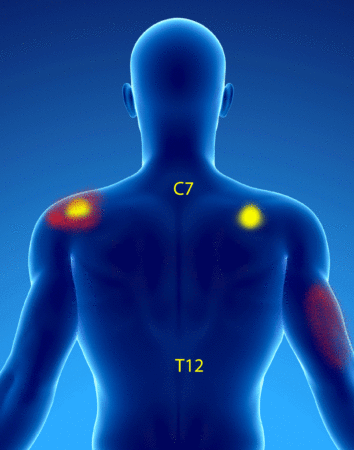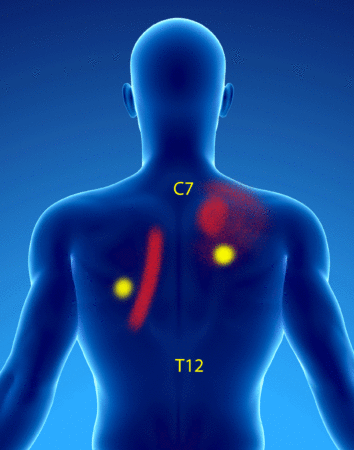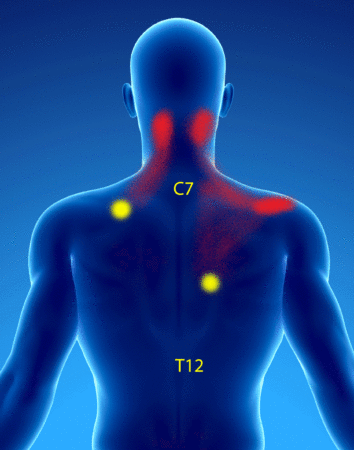Anatomical reminder
The trapezius muscle consists of 3 parts: upper, middle and lower.
The anatomical insertions of the two trapezius form a diamond extending from the occiput to the T12 vertebra.
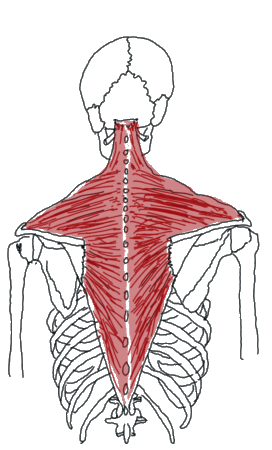
Laterally, it attaches to the clavicle in front and the scapula behind.
The motor innervation is carried out by the 11th cranial pair. Sensory innervation by the C2 to C4 roots.
The trapezius has a role of elevation of the shoulder and adduction of the scapula.
Myofascial Syndrome
Pain related to the upper trapezius is generally related to skeletal abnormalities such as:
– lower limb length asymmetry,
– a small semi-basin,
– too short arms.
But also to prolonged positions of the shoulders up or clothes that are too heavy or too tight (bra straps).
The trapezius muscle has 6 areas of tension responsible for referred pain:
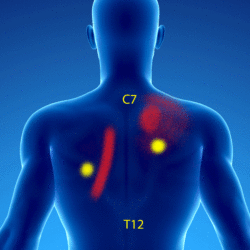
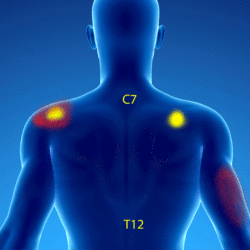
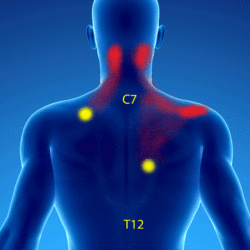
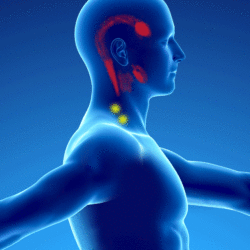
The different muscle areas (in yellow) responsible for referred or referred pain (in red).
For the medium trapezius, the areas of tension are created when the arms are held upwards for a prolonged period (position of the arms at the top on the steering wheel).
The lower trapezius develops areas of tension when the subject leans forward for a long time.
The treatment
It is based on massages and stretching:
– For the highest points, the patient is on a chair and fixes himself with both hands on the bottom of the chair, which allows the upper part of the trapezius to be stretched. An additional stretch is obtained by leaning the head forward.
– For the middle and lower part, the patient is always seated on a chair. He leans forward with the ipsilateral arm in pain reaching for the back of the contralateral chair.
In the GDS global muscle chain method, the trapezius muscle in its vertebral part is part of the postero-median muscle chain.
In the GDS global muscle chains method, the trapezius muscle in its middle part is part of the PA AP muscle chain.
In the GDS global muscle chain methodology, the trapezius muscle in its upper and middle part is part of the PL muscle chain.

